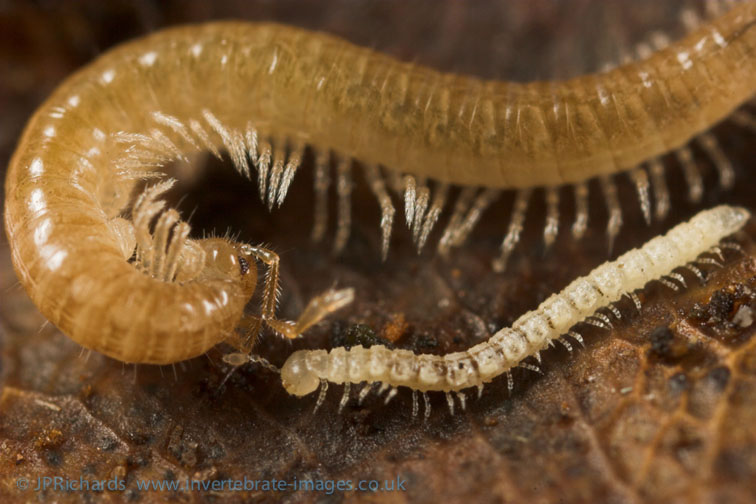Macrosternodesmus palicola Brölemann, 1908
Status:
GB IUCN status: Least Concern
ID Difficulty
Identification
A small white millipede (to 4 mm in length) with the body covered in small bumps and does not coil into a tight spiral when disturbed. It can be confused with its frequent associate Ophiodesmus albonanus (a slightly larger and smoother millipede).
Distribution
This species has proved to be widespread in Britain and Ireland. It is apparently absent from much of northern Scotland, north Wales and south west England. This, in part at least, may be related to the underlying geology as M. palicola is usually described as a calcicole.
Macrosternodesmus palicola has an Atlantic distribution extending from the Pyrenees to Norway. It occurs as a synanthrope further east in Germany and Sweden (Kime, 2001).
Habitat
Kime (1995) reported its occurrence in beech woods on the chalk downs of southern England whilst Gregory and Campbell (1996) reported its presence in ancient deciduous woodland and synanthropic sites on calcareous soils in Oxfordshire. Analysis of the recording scheme habitat data suggests it is very strongly associated with synanthropic suburban / urban sites especially churchyards and cultivated land such as allotments, gardens and parks. In these synanthropic habitats it is not restricted to calcareous soils and has been collected from gardens on acid sands in East Anglia and gritstone in Yorkshire. In Belgium it is mainly found in woodland on chalk and limestone with only a few records from synanthropic sites (Kime, 2004).
Phenology
In Britain and Ireland it has been recorded frequently in the winter months from the underside of large stones, often during periods of sharp frosts. Adults have been collected in each month from October to July, most frequently in April and May.
This species account is based on Lee (2006).
Links
MilliBase - Global catalogue of Millipedes: https://millibase.org/aphia.php?p=taxdetails&id=937967






